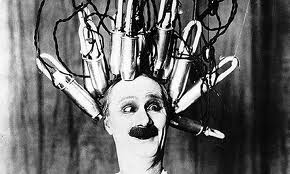Trying Different Amounts of Water
What difference does the amount of water you put in the rocket make?
You will need a way of measuring the effect. One way to do this is to use your watch to time the number of seconds that the rocket is in the air.
First, try launching your rocket without any water in it. Try subsequent launches with 100 ml, 200 ml, 300 ml, 500 ml, 750 ml and 1000 ml.
Don’t use more than 1 liter of water (1000 ml) or the weight of it will bend and crush the fins before the rocket lifts off!
Which one stays up the longest? Why does the amount of water make a difference?
What Effect Does Dish Soap Have?
Adding lots of foaming dish soap to the rocket water seems to make the rocket go much higher. How much soap makes it go the highest? And how much higher does it fly?
Just before pumping up each rocket with soap, make sure to really shake the rocket so that the soap foams up as much as possible. Launch your rocket with 300 ml of water (without soap) and measure how long it stays up in the air. Then launch it with 50 ml of dish soap and 250 ml of water and measure. Then 100 ml of soap and 200 ml of water and measure.
Why does the foamy water make a difference to how long the rocket stays up?
Measuring Liftoff Acceleration and Velocity
Put a small stick in the ground right beside your rocket. Tape a meter-stick ruler to the small stick so that it is vertical right beside your rocket.
Set your video camera or smartphone to the fastest frame-rate possible and film the rocket lifting off. When you view the video later you will be able to see how far the rocket went from one frame to the next.
If you used a frame-rate of 30 frames per second:
1. Velocity will be Distance (cm) travelled per frame (from one frame to the next) * Frame Rate (in frames per second). The answer will be in units of cm/second. Try this at different frames.
2. To calculate acceleration, you will need to calculate the velocity of the rocket for two adjacent pairs of frames. For example, calculate the first velocity from frame 1 to frame 2. Then calculate the second velocity from frame 2 to frame 3. The change in velocity per frame at that point in the rocket’s flight will be (Second Velocity – First Velocity) / frame. Acceleration will be (Second Velocity – First Velocity) / frame* Frame Rate (in frames per second). The answer will be in units of cm/second². You can change this to meters/second² by dividing the answer by 100.
If you calculate acceleration for different pairs of frames, what do you notice about acceleration? Is it changing over time? Why?
Launching Horizontally for Distance
You can make your rocket travel very far by launching it at an angle sideways. First make sure that the open field is still wide open where the rocket will land. This could be hundreds of feet away.
Pound a stick into the ground at a 45 degree angle, aiming in the direction you want the rocket to go. When the rocket has water and the launcher-cork in it, lay it on the angled stick. Now the rocket is aiming at a 45 degree angle sideways toward the target part of your field.
When you pump up and launch the rocket, it will go very far in the direction it was pointing, possibly hundreds of feet.
Measure this distance with a rolling distance counter. Try different stick-angles to see which one results in the farthest flight.
Water Rocket Experiments: Make the Fins Spin the Rocket
Try gluing the fins on at an angle. All three fins should be at the same angle, so that when the rocket flies, the air going past the fins will make the rocket spin slowly (for a small fin angle) or vigorously (for a steep fin angle.
Try to think of your own experiments to do with your rocket. Always think ahead to keep in mind the safety of yourself and others.
